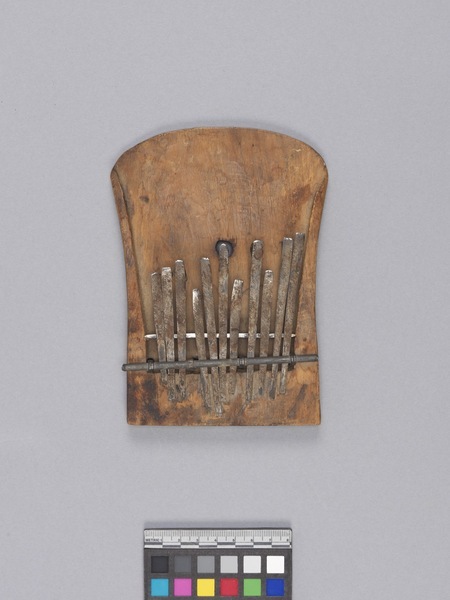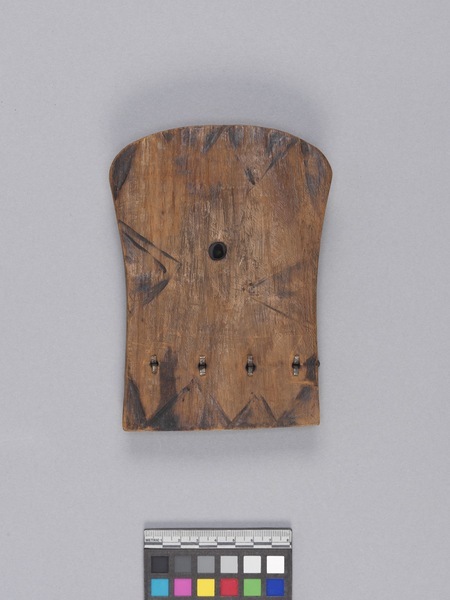Thumb Piano Item Number: 3512/47 from the MOA: University of British Columbia


Description
Thumb piano consisting of eleven metal prongs attached to a wooden base with a metal bar, secured with four hooks, and supported by a strip of metal sheeting. The prongs are flat at the tip and then curve upward at their ends, with balls of resin(?) attached underneath. The top and sides of the base have raised walls; the top wall is straight, sides curve inwards. The bottom flares outward and has a rounded edge. There are incised and burnt triangle designs on the sides and bottom of the base.
History Of Use
The sanza, or mbira (Shona language) is a plucked idiophone (or lamellaphone) that has been in use for thousands of years, and is played widely throughout the African continent. It is known by many different names, e.g., kilembe, likembe, kadono, akogo, timbrh, and thumb piano and has undergone variations, such as the kalimba, but the general style and function remain consistent. The instrument has been played for both secular and ceremonial use, e.g., around the fire during social evenings, or to commicate with the ancestors.
Narrative
Purchased in Serowe by the donor in 1977. According to Hope, these were traditionally made by Khoisan families to sell to the Bomanwato.
Item History
What
- Name
- Thumb Piano
- Identification Number
- 3512/47
- Type of Item
- thumb piano
- Material
- wood, steel metal and resin ?
- Overall
- height 3.5 cm, width 11.8 cm, depth 16.3 cm
Where
- Holding Institution
- MOA: University of British Columbia
- Made in
- Central, Botswana
When
- Collection Date
- during 1977
- Ownership Date
- before July 19, 2021
- Acquisition Date
- on July 19, 2021
Other
- Condition
- fair
- Accession Number
- 3512/0047